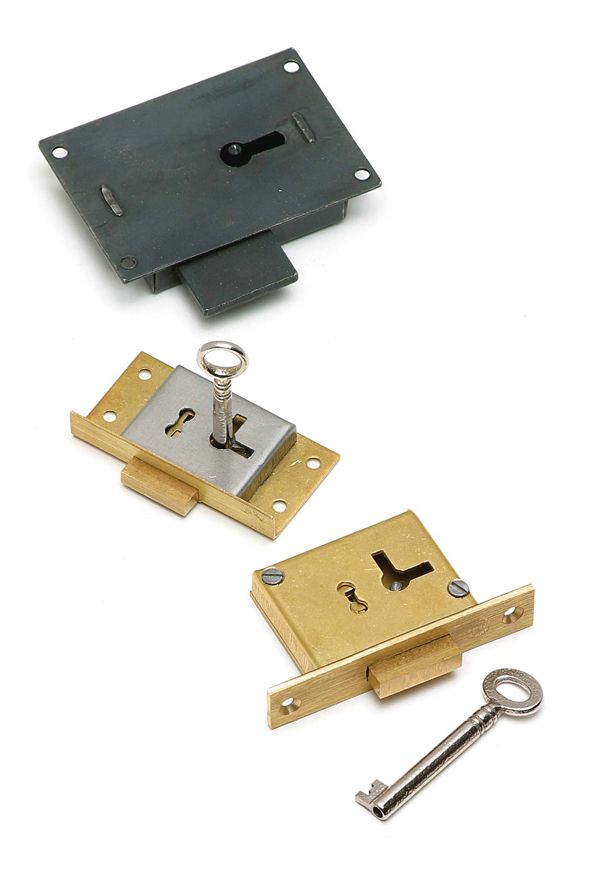Choosing and Installing a Lockset
Simple steps for securing boxes, doors, and desk lids
Synopsis: In years past, a desk might hold not only valuable papers but also high-priced tea and spices in its tiny, specially made drawers; so often, locksets were a requirement. Today they are used to add a touch of elegance and design, as well as function. Lonnie Bird discusses three types of locksets: full mortise, half mortise, and surface. He describes their different uses and appearances and gives detailed explanations on how to install each type on a door, drawer, box, or lid.
Lonnie Bird is an author and woodworking instructor. Visit him online at www.lonniebird.com.
From Fine Woodworking #162
Years ago, locksets were installed on most case pieces. Books, papers and other important documents were secured inside secretaries, while expensive tea and spices were housed in specially made, diminutive chests complete with tiny drawers and locking doors.
Although most of us today are not as concerned about keeping our spices under lock and key, a carefully fitted lockset still can add a touch of class to a fine piece of furniture. And installing a lockset is not an intimidating task.
But when selecting a lockset for your project, you’ll be faced with a wide variety of lockset styles and sizes. Flipping through a period hardware catalog, you’ll see options ranging from basic surface locksets that simply screw onto doors or drawers to full-mortise locksets that are concealed. Half-mortise locksets are the most commonly used by furniture makers. They are mortised into the furniture but are visible only on the inside of the piece.
Half-mortise locksets fall into three broad categories—locksets for doors and drawers, chest or box locksets, and desk-lid locksets.
Locksets for doors and drawers are usually interchangeable because the lockset body has two keyholes 90° apart that allow you to mount the lockset either horizontally for a drawer or vertically for a door.
Chest locksets come supplied with a back plate that mounts to the lid. Hooks on the keeper engage with the lock to keep the box lid secure. These locksets are available in a wide range of sizes, from tiny locksets for tea caddies to large locksets for blanket chests.
Desk-lid locksets have an angled back plate that conforms to the angled rabbet on the front edge of the lid. Of all the lockset types, desk-lid locksets are the most visible, so they are available with a cast back plate. Although you can opt for a less expensive, stamped back plate, it doesn’t have the handmade look of the old desk-lid locksets.
After selecting the type of lockset but before settling on a size, it is best to select an escutcheon because its size and position on the case often dictate the lockset size. The escutcheon is a decorative surround that protects the keyhole from wear and lends clues to the period in which the piece was made. You can purchase escutcheons in a wide variety of styles, or you can make your own.
For the full article, download the PDF below.
Fine Woodworking Recommended Products

Dubuque Clamp Works Bar Clamps - 4 pack

Bessey EKH Trigger Clamps

Starrett 12-in. combination square























Comments
“[Deleted]”
Log in or create an account to post a comment.
Sign up Log in